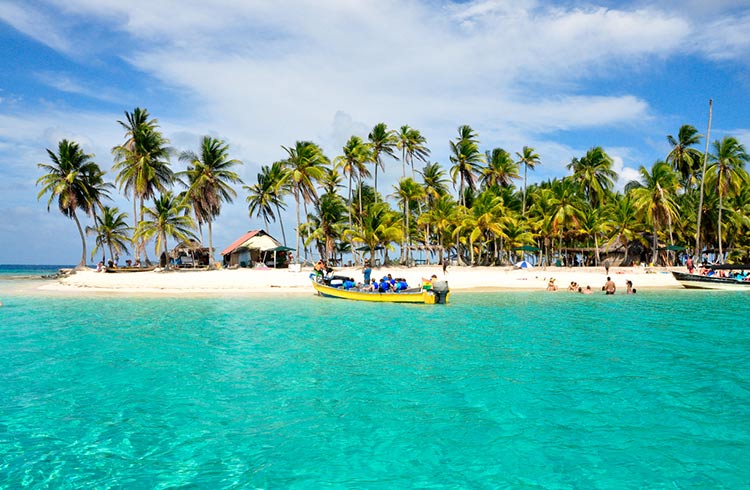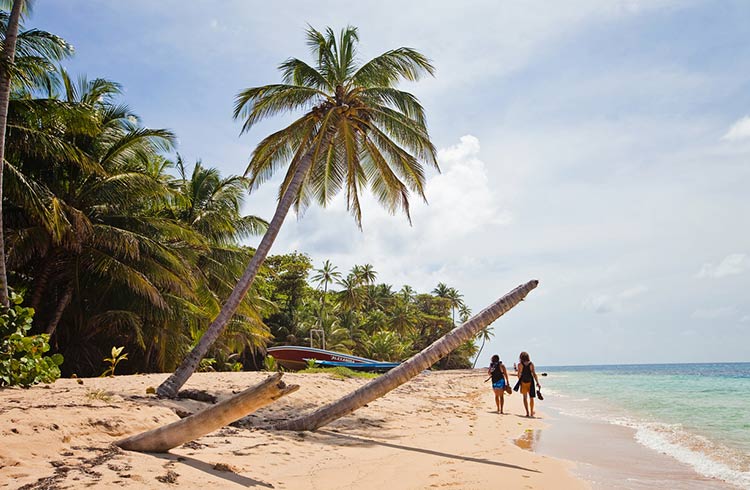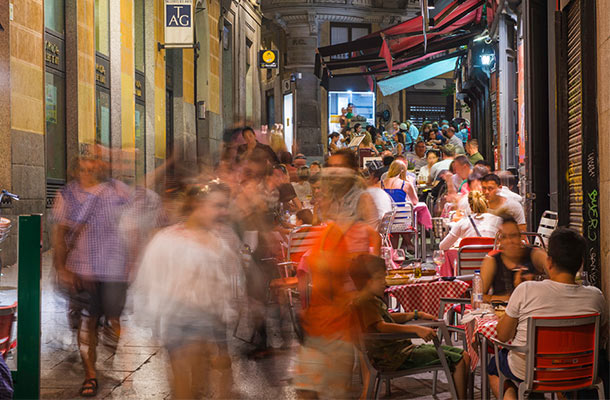How to Choose a Good Spanish School in Central America
Whether you’re traveling through Central America for a while or a little while longer, “dos cervezas por favor” will only get you so far. Speaking Spanish is an absolute asset, which once harnessed, literally doubles the size of your world. Here’s the low-down on learning Español in Central America.
 Photo © iStock/Joel Carillet
Photo © iStock/Joel Carillet
Thanks to my fascination with Latin culture and a language that’s spoken in over 20 countries, I'd always longed for membership to the 400 million strong club of Spanish-speakers.
Two years ago I hopped on a flight from London to Central America. Stopping off at several Spanish schools along the way, I enjoyed the experience so much that I decided to stay-put and live permanently in Panama, while working at Spanish at Locations.
Along the way, I spoke to many students about their wants, needs, joys, and frustrations of learning the lingo. I learned how to spot an Argentinean instantly. I learned about the chilling Mexican legend of the Nahuales; creatures which are said to bite the big toe of children to retain their youth. I learned that the way to get the attention of a server in a Panamanian restaurant is by shouting, “young person” (joven).
I gained much more than language skills. I met the world. And so can you.
- How to Choose a Good School from the Bad
- Different Schools Offer Different Experiences
- Recommendations
How to Choose a Good School from the Bad
Choosing the right Spanish school for you may be daunting given all the potential factors to weigh in. Are you looking to take classes as a means of establishing roots in one place, or is mobility your preference?
Exploring as a Preference
Spanish at Locations’ one-month Travelling Classroom sees you spending a week in four places: Panama City (with a weekend jaunt to the San Blas Islands), Boquete, Bocas Del Toro, and Turrialba in Costa Rica. Their program was designed for people seeking enriching travel experiences, without stopping and starting from scratch with different teachers at each school.
A good Spanish school should also care about where you live. Even if they don’t directly provide living quarters, they should have reputable lodging affiliations. The icing on the cake is if they also offer airport pick-up, as Spanish at Locations does. The school, based in both Costa Rica and Panama, owns its own hostels in Boquete, Bocas del Toro, Turrialba and Puerto Viejo. They also offer home stays and recommend other hotels and hostels.
Ease of Getting to Know Other Students
Another factor, which will add greatly to your experience, is how easy it is getting to know other students. I’ve spent a considerable amount of time in Central America over the years, much of that was at Spanish at Locations’ hostel in Bocas del Toro, Spanish by the Sea.
When you stay here, you feel a sense of community unlike any other hostel in Bocas. You meet your tribe and find yourself having shared dinners and conversations over Cards Against Humanity.
Local and Foreign Providers
It helps if your course providers are both local and foreign. It’s great getting lessons from locals, but you may appreciate a teacher that isn’t a native Spanish speaker and thus, may better understand common pitfalls you might make, as they too were once in your shoes.
Having teachers from a mix of countries exposes you to location-specific cultural titbits, as well as the different accents in Latin America, which will be crucial to your future career as a Spanish speaker.
Watch Out for Additional Fees
Some schools charge for anything and everything, including books. Many schools afford their students with volunteering opportunities, which you must pay through the nose for.
Casco Antiguo Spanish School in Panama City places you with their NGO affiliates absolutely free of charge. The school was founded by a former Peace Corp volunteer who would never dream of charging students for the privilege.
Freedom to Swap
You should be able to swap teachers, levels or class times at any given point if you so desire. If you’re not an early bird, why be forced to take morning classes?
There shouldn’t be too many students in your class either, so your voice doesn’t get drowned out, and group discussions aren’t daunting.
Does the idea of speaking out loud fill you with dread? Then you should probably opt for an institution that enforces Spanish-only in class to bolster your speaking skills.
Accreditation
Check each schools’ accreditation (Instituto Cervantes, DELE, Bildungsurlaub) and think about all your likes and loathes when choosing where to situate yourself.
Different Schools Offer Different Experiences
A common thread among Spanish schools in Central America is an awareness that students want more than just a language class – they want an immersive experience to connect deeper with their location.
Subsequently, many offer some form of social-cultural activity beyond the classroom. Casco Antiguo has a healthy roster of (free) extra-curricular activities in the evenings, including salsa classes, beach volleyball, happy hour and sunset bike rides.
Spanish at Locations in Bocas del Toro will even take you to Filthy Friday, Central America’s first Island Party Crawl – if that sort of thing floats your boat.
Spanish at Locations is unique in that its traveling class spans two countries. Niels, a fellow student there confided in me, stating, “I really got the best of both worlds: we had city, amazing beaches, mountains, nature and wildlife. We had beautiful night rain in San Blas and wonderful sunsets in Bocas. I couldn’t believe my luck”.
Students at Panama City’s Casco Antiguo cite attending the school as a cultural experience in itself being situated in Casco Viejo, with its narrow streets, colonial architecture and stunning vistas left and right. Their classrooms extend to the streets of Panama City, as teachers have been known to go shopping with students to assist them with their purchases.
My favorite lesson here was when my Mexican “profesora” Deya, brought in some chili lollipops and Mazapán from her recent trip to Oaxaca for us to try. The latter is a Mexican sweet, which literally translates as “peanut cheese”. It’s always nice to get a taste of the world you’re learning about.
At some schools, you don’t actually have to go to class at all. Habla Ya is one such institute that offers online lessons conducted on Skype, alongside their group courses, private lessons, basic travellers crash courses, part-time Spanish for ex-pats and even business Spanish programs.
Recommendations
If you’re considering joining a Spanish school on your travels, find the best of the bunch by reading Trip Advisor reviews to see what previous students had to say first hand.
Decide which country (or countries) you would like to situate yourself in. Do the Pacific Mountains in Panama call your name, or will your ocean addiction draw you to Costa Rica?
How about both? Taking an online placement test on the school’s website will be your next port of call. This is usually followed by an oral test in person.
Some great Spanish schools in the region include Habla Ya Panama, Casco Antiguo Spanish School in Panama City, Instituto Cultural Oaxaca in Mexico, Honduras Spanish School in Utila, Cooperative Spanish School in San Pedro la Laguna, Guatemala, and Spanish at Locations in Panama and Costa Rica.
As my classmate Emily put it, “There is just so much richness within the Spanish language; from the music to the films. The people and the culture as a whole are so stunning. It’s spoken in so many places as well, so its usefulness is unquestionable”.
One thing is for sure, Central America is a rivetingly beautiful place to learn Spanish – even if it’s only to be able to understand the words to Despacito. Vamos!
Related articles
Simple and flexible travel insurance
You can buy at home or while traveling, and claim online from anywhere in the world. With 150+ adventure activities covered and 24/7 emergency assistance.
Get a quote


No Comments